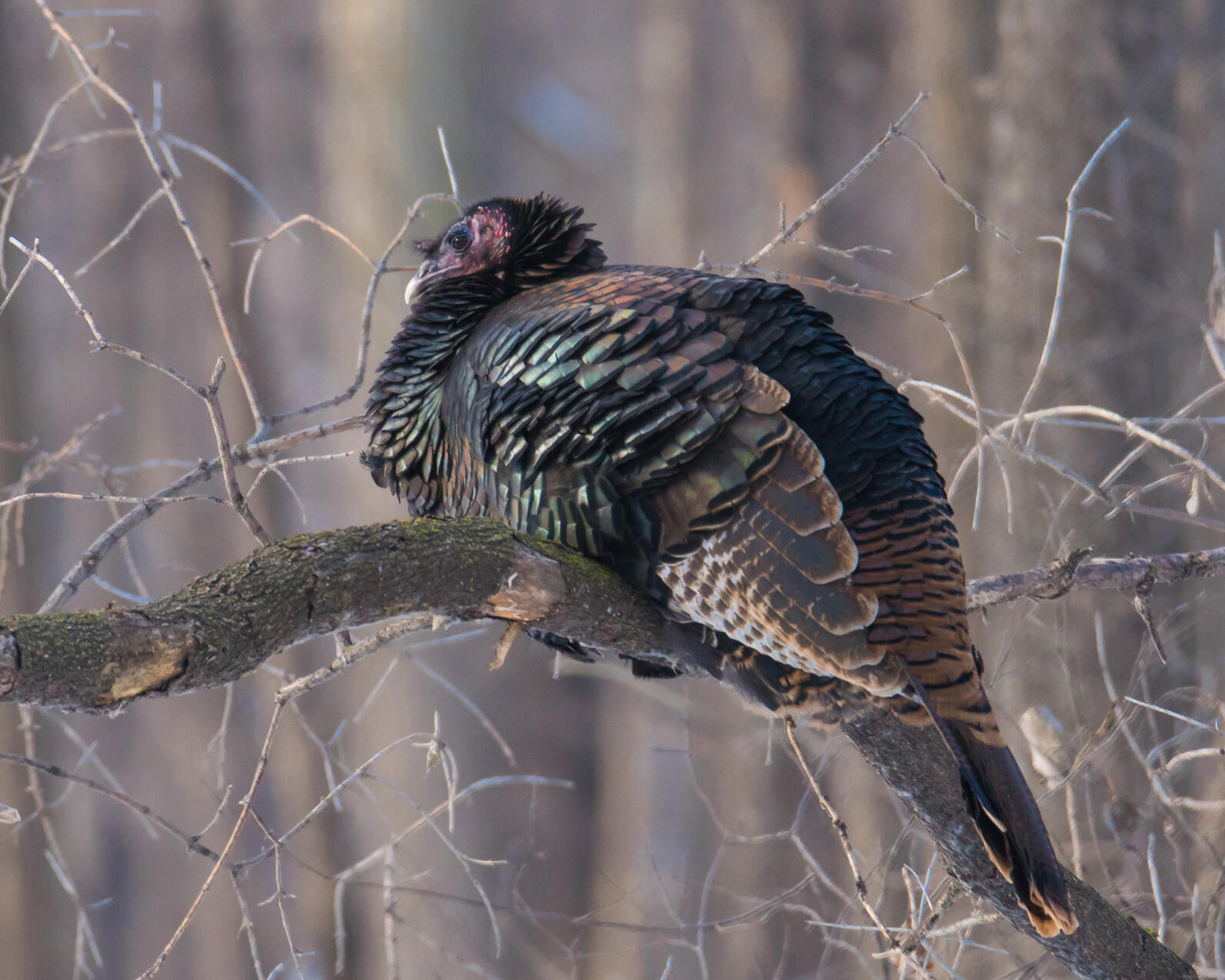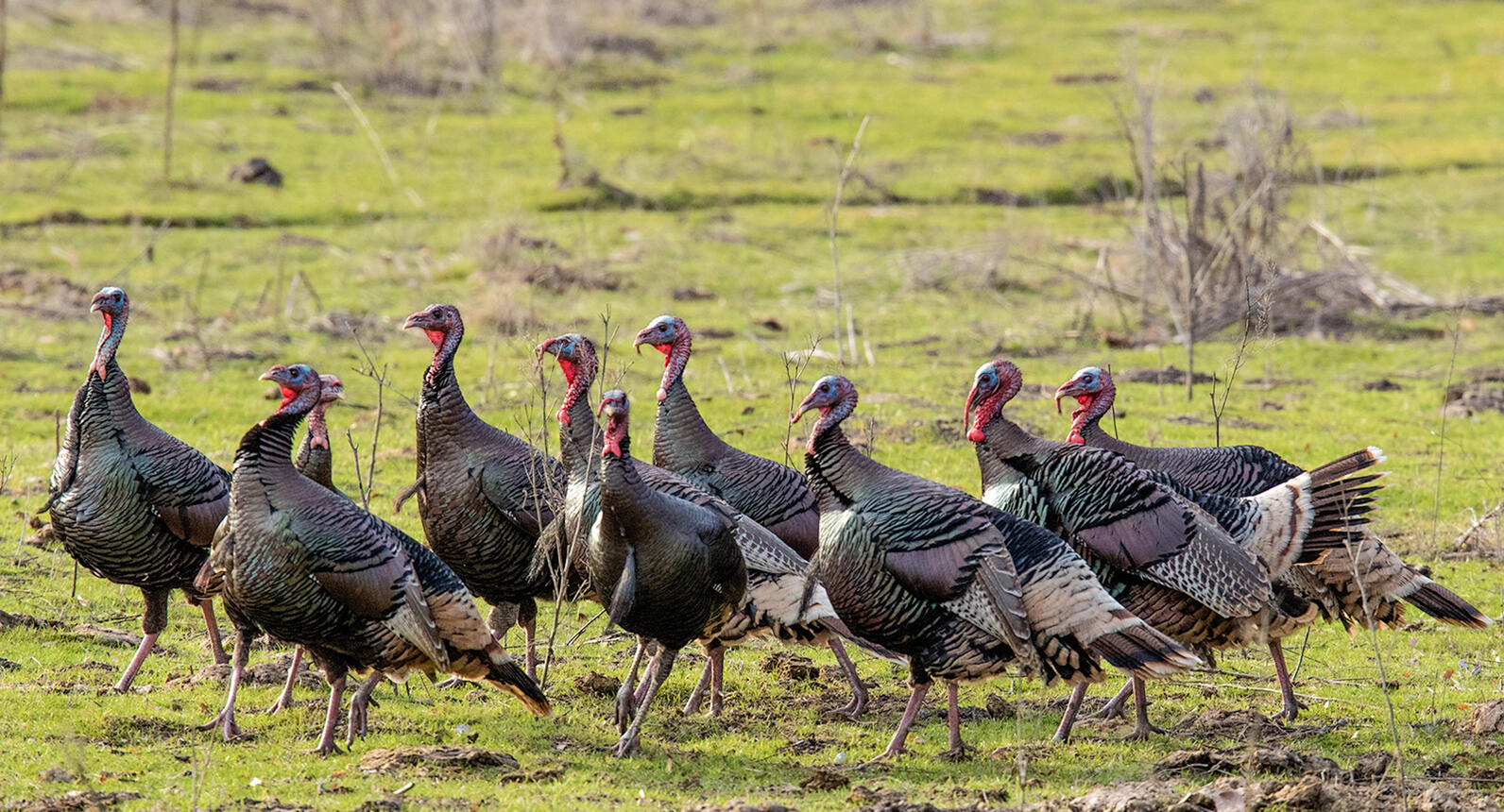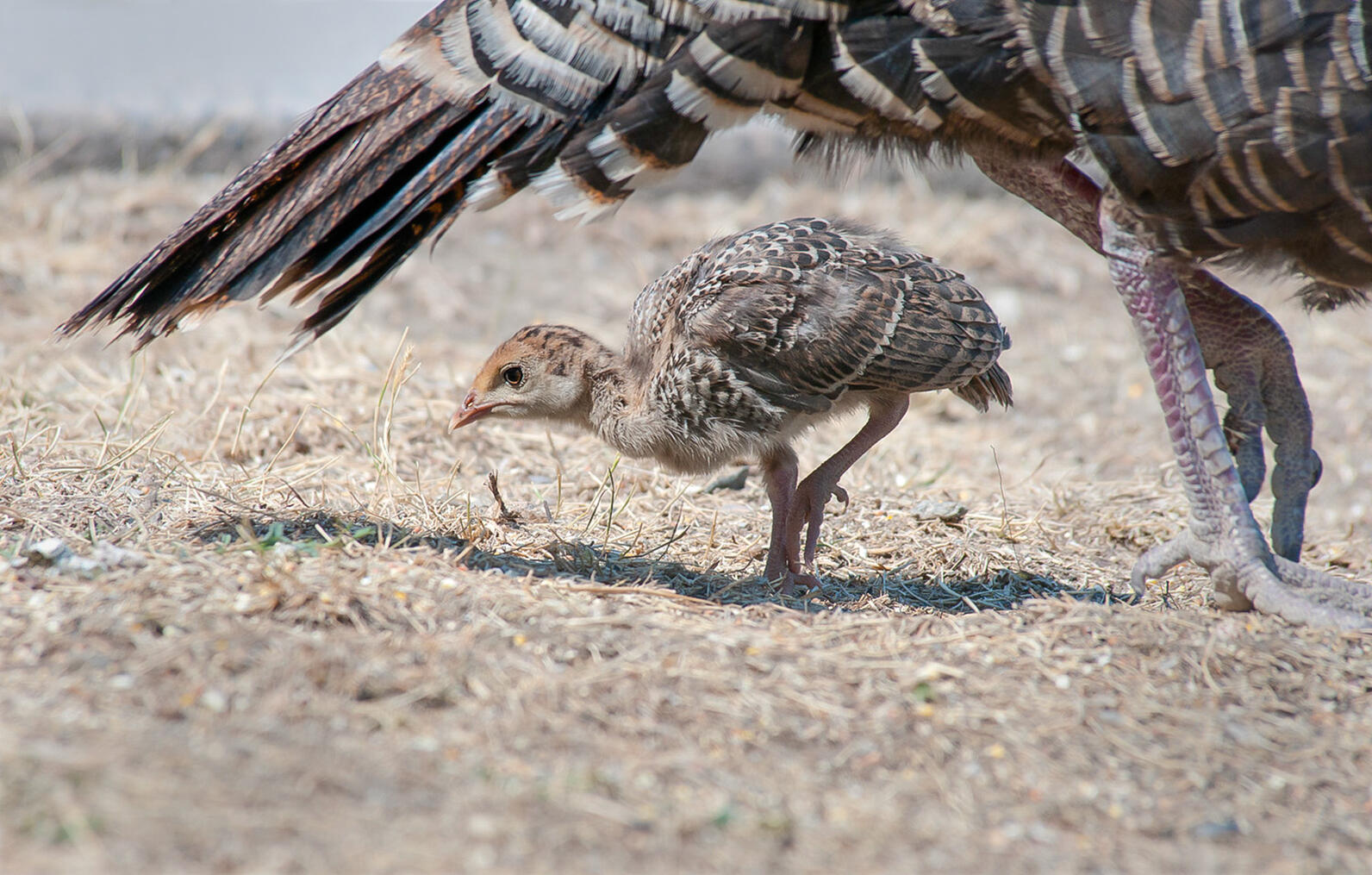While turkeys are now common across rural landscapes, that wasn’t always the case. Let’s take a closer look at this interesting game species’ conservation story, and learn how to help turkeys continue to thrive.
TURKEY TALK
Most of us are familiar with Wild Turkeys (Meleagris gallopavo) and can easily identify them – large, heavy birds (goose-sized), with a long neck, bare head, and long legs. Their red wattle (loose, bumpy skin hanging from their neck) is more distinctive in male or “tom” turkeys. Toms can fan their tail feathers and fluff up their chests in an impressive breeding display. They’re known for their famous vocalization – the “gobble.” Despite their heavy body mass, turkeys can fly short distances and will even roost in trees.
Turkeys’ preferred habitat is mature forest with an open canopy, adjacent to fields and other openings. In the northeast, they seek out forests comprised of nut trees, like oaks, hickories, and beech, as well as soft mast species like cherry. Turkeys forage for seeds and nuts on the forest floor, and will eat plants and insects occasionally. They build their nests on the ground, usually in the forest at the base of a tree, but can be placed in tall grass or under a shrub.

A CONSERVATION SUCCESS STORY
Prior to the 1960s, Wild Turkeys were not as widespread throughout the U.S. They inhabited fewer states and were not found in the western part of the country. In the northeast, turkeys occupied only the southern portions of New York, Vermont, New Hampshire, and Maine. Turkeys were a valuable food source for Native Americans, who first domesticated the birds, and early European colonists also hunted turkeys for their meat.
Populations were abundant until the mid-1800s, when European colonists cleared forestland for agriculture, development, and railroad construction. The rapid loss of forest habitat coupled with unregulated hunting led to steep declines, and turkey populations plummeted to their lowest by the 1930s and 40s. Some estimates suggest that turkeys declined across their range by 90%, even vanishing from many states they had previously occupied, including Vermont and New York.
Several state wildlife agencies made the first attempts at restoring turkey populations. In their favor, turkey habitat was increasing due to the abandonment of farms during the Great Depression and the subsequent regrowth of forests. It took several decades of trying various restoration techniques, but finally in the 1950s, wildlife biologists utilized cannon nets to capture Wild Turkeys and relocate them to areas they once populated. These new restoration attempts were very successful and this method of capturing and relocating Wild Turkeys was quickly replicated throughout the U.S.

By the 1970s, Wild Turkey populations had increased dramatically, so much so that hunting resumed in some areas. Strict hunting regulations also helped the population rebound. Their range now expands well beyond the historic range - Wild Turkeys now occupy 49 states (all but Alaska), parts of Mexico, and southern Canada. Their conservation success story is due to a massive cooperative conservation effort to restore their population. The National Wild Turkey Federation was organized in the 1970s to drive education, policy, and funding that will ensure the continued conservation of Wild Turkeys.
TIPS TO CREATE TURKEY HABITAT
If you’re inspired by the conservation success story of Wild Turkeys and want to see and support these delightful birds on your land, Audubon can help! We work with landowners and land managers, on projects like Woods, Wildlife, and Warblers, to provide management guidance to create or maintain important habitat for many birds, including Wild Turkey.
By creating open canopies within mature forests, and planting nut and berry-producing trees, you will also benefit many other forest birds (game and non-game species) that use similar habitat, like American Woodcock, Ruffed Grouse, Cerulean Warbler, Downy, Pileated, and Red-bellied Woodpeckers, Indigo Bunting, White-breasted Nuthatch, Blue Jay, and many more. Many mammal species use turkey habitat, too, including deer, bear, hare, squirrels, and more.

If you don’t own much land but live near a forest, you can support local Wild Turkeys by planting the same nut and berry-producing trees, like oaks and cherries, in your yard (be sure to plant native species to provide the most nutritious food sources! Check out Audubon’s Plants for Birds directory to find native species that will grow well in your region).
New Yorkers can contribute to Wild Turkey monitoring efforts organized by the NYS Department of Environmental Conservation (DEC) through their Summer Wild Turkey Sighting Survey. Observers can share details about the number of males, females, and young turkeys they see. This helps the DEC learn more about the reproductive success of turkeys.
Wild Turkeys are a beloved, well-recognized, and frequently observed species. And, creating and conserving their habitat is a great practice that helps many birds and other wildlife.
Interested in learning more about Wild Turkeys? Visit Audubon’s Guide to North American Birds.
###
Sources of information:
Audubon Guide to North American Birds
National Wild Turkey Federation
New York State Department of Environmental Conservation
The Cornell Lab of Ornithology, All About Birds




